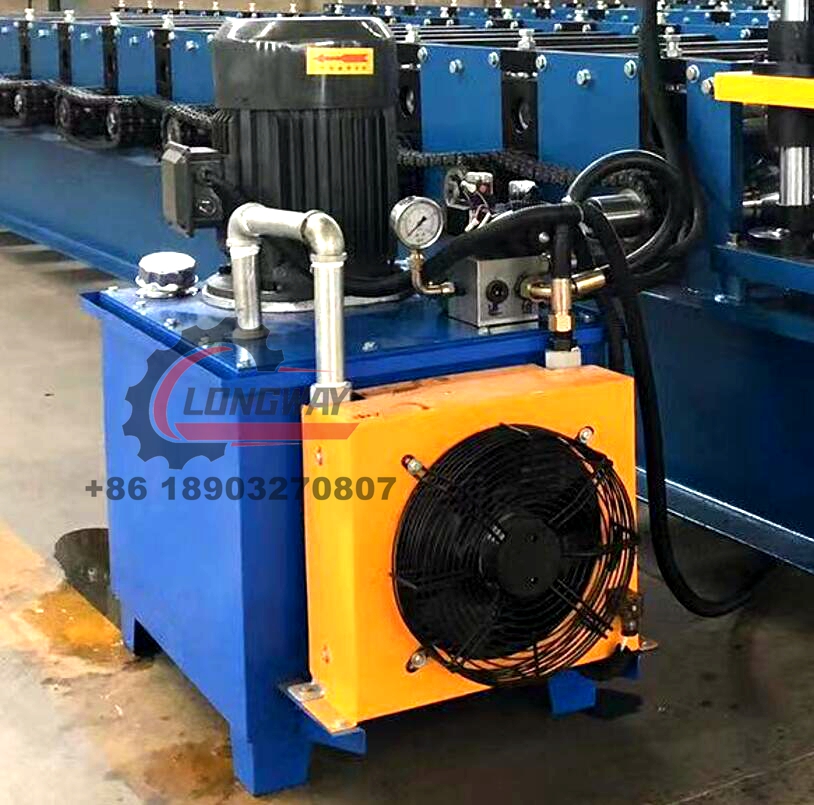Downpipe Fabrication Equipment for Efficient and Precise Metal Forming Solutions
The Significance and Functionality of Downpipe Forming Machines
Downpipes play a crucial role in the effective drainage and management of rainwater from roofs and other structures. To produce these essential components efficiently and with precision, manufacturers often turn to downpipe forming machines. This article explores the significance, functionality, and advancements in downpipe forming machines.
Understanding Downpipe Forming Machines
A downpipe forming machine is specialized equipment used in the manufacturing of downpipes, which are vertical pipes that channel rainwater from gutters to the ground or drainage systems. These machines are designed to process flat metal sheets into tubular forms, ensuring that the downpipes are not only functional but also aesthetically pleasing. Different materials can be utilized in this process, including aluminum, stainless steel, and galvanized iron, making the machines versatile in terms of production capabilities.
The Production Process
The production of downpipes using a forming machine generally involves several key steps. First, the raw metal sheets are loaded into the machine. The forming machine crimps, bends, and rolls the metal to create the desired tubular shape. The precision of this process is vital; downpipes must fit seamlessly with gutters and other elements of a rainwater management system.
1. Sheet Feeding The metal sheets are fed into the machine using automatic feeding systems. Accurate feeding mechanisms ensure that the sheets are positioned correctly for subsequent operations. 2. Bending and Forming After feeding, the machine uses rollers and molds to bend the metal sheets into the required diameter and shape of the downpipe. This step is crucial for ensuring that the final product fits within architectural constraints and drainage designs.
3. Cutting Once the downpipe is formed, it is then cut to the specified lengths. Some machines automate this process, making it quick and efficient, reducing labor costs and potential errors.
4. Finishing Touches The formed downpipes may undergo additional treatments such as surface finishing or coating to enhance durability and prevent rust, especially in outdoor applications.
Advantages of Using Downpipe Forming Machines
The implementation of downpipe forming machines offers several advantages to manufacturers
downpipe forming machine

- Increased Efficiency These machines can produce large quantities of downpipes in a shorter span of time compared to manual production methods. This efficiency leads to reduced labor costs and a quicker turnaround for projects.
- Precision Engineering Modern downpipe forming machines are equipped with advanced technologies such as CNC (Computer Numerical Control) systems. This ensures that each downpipe is produced with precision, maintaining consistency across large batches.
- Versatility Many machines can be configured to produce various sizes and shapes of downpipes, allowing manufacturers to cater to diverse client needs without significant downtime.
- Reduced Waste Automation minimizes excess material wastage. By ensuring accurate cuts and formations, manufacturers can optimize their raw material usage, contributing to cost savings and sustainability.
Technological Advancements
The evolution of downpipe forming machines has seen significant technological advancements in recent years. Innovations include
- Smart Integration Many machines now feature IoT (Internet of Things) capabilities, allowing for remote monitoring and management of production processes. This leads to better maintenance schedules and reduced machine downtime.
- Energy Efficiency Newer models are being designed with energy-efficient motors and systems, conserving energy during operation and reducing overall production costs.
- User-Friendly Interface User interfaces have become more intuitive, allowing operators to easily program and control machine functions, even if they have minimal technical training.
Conclusion
Downpipe forming machines are an indispensable asset in the construction and fabrication industries. Their role in streamlining the production of downpipes not only enhances efficiency but also ensures that high-quality standards are maintained. As technology continues to advance, these machines promise even greater improvements in productivity and precision, ultimately contributing to better rainwater management solutions worldwide. The importance of investing in modern downpipe forming technology cannot be overstated, as it enables manufacturers to meet the growing demand for effective drainage solutions in an ever-evolving market.
-
Roof Panel Machines: Buying Guide, Types, and PricingNewsJul.04, 2025
-
Purlin Machines: Types, Features, and Pricing GuideNewsJul.04, 2025
-
Metal Embossing Machines: Types, Applications, and Buying GuideNewsJul.04, 2025
-
Gutter Machines: Features, Types, and Cost BreakdownNewsJul.04, 2025
-
Cut to Length Line: Overview, Equipment, and Buying GuideNewsJul.04, 2025
-
Auto Stacker: Features, Applications, and Cost BreakdownNewsJul.04, 2025
-
Top Drywall Profile Machine Models for SaleNewsJun.05, 2025








